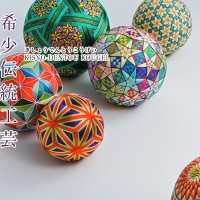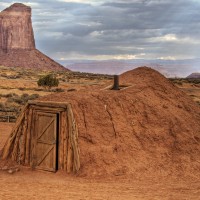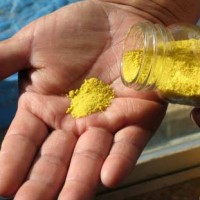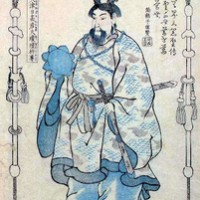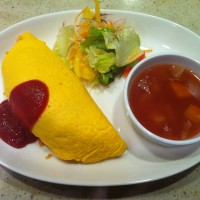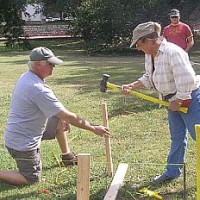blog
Monday: One Point Nihongo Clinic
07/21/2015 blog
A Generic Counting Sequence (てまり/Temari) 一つ(ひとつ)Hitotsu 二つ(ふたつ)Futatsu 三つ(みっつ)Mittsu 四つ(よっつ)Yottsu 五つ(いつつ)Itsutsu 六つ(むっつ)Muttsu 七つ(ななつ)Nanatsu 八つ(やっつ)Yattsu 九つ(ここのつ)Kokonotsu 十(とお)Too <Example> You: “Oikutsu (desuka)? 「おいくつ(ですか)。」” A 7-years-old: “Nanatsu (desu). 「ななつ(です)。」” (How to make Temari: https://youtu.be/6vAIrSJBSo0)
Monday: One Point Nihongo Clinic
07/20/2015 blog
“Ko (こ),” “So (そ),” “A (あ),” “Do (ど)” #3 Special uses of “So (「そう」)” (“Oh, yeah!” Dance) [Situation: You are in a grocery store.] When you get to the Bakery section, you saw dozens of bagels taken out of the oven. “Smells yummy!” All of sudden, you remember your favorite cream sheese is running out. You: “Oh, yeah! I got to get my cream cheese at Dairy section!” When you have a sudden idea or recollection like “Oh, yeah!” in English, you say “A, So da (「あっ、そうだ!」)” in Japanese. Other expressions applicable to this Japanese translation includes “Oh, I know!” and “Oh, that’s right.”
Saturday (NEW): ナバホインディアンのくにへ #3
07/19/2015 blog
<つづき> よる、わたしは、ホーガン(おもやとつながっている)にねたのであるが、しゅうしんまえ、スティーブがこのホーガンをおとづれ、このでんとうてきたてもののせつめいをしてくれた。とうざいなんぼくにもそれぞれつぎのようないみがあるという。 ひがし:いりぐち (このルールはぜったいにまもらなければならない) みなみ:こども にし:おとこ きた:おんな (じゅうようなものはここにおく) また、ひがしとにしはおのおの「さいしょのおとこ」と「さいしょのおんな」のほうがくであり、みなみは「ちしき」を、にしは「りかい」を、きたは「しんねん・しんこう」をあらわしているのだという。 にんげんのりょうあしで、みぎあしは「おんな」で、ひだりあしは「おとこ」、そのあいだのくうかん(あな)はいりぐちで、ここからペニスがそうにゅうされ、こどもができる。ホーガンのかたちは、にんしんちゅうのおんなのはらをあらわし、そのちゅうしんでもえているだんろは、おんなのはらのなかでじゅせいがおこなわれるさま、もえているひは、しゃせいごのおんなのはらのなかのようすなのだそうだ。
Saturday (NEW): ナバホインディアンのくにへ #2
07/19/2015 blog
1がつ30にち (とうもろこしのかふん) スティーブはメディスンマンである。だから、グレイスとさいかいしたときも、なにかこなじょうのものをかのじょのくちにいれ、いのりをとなえていた。そのあと、グレイスとはわかれ、スティーブのくるまでかれのいえへとむかう。かれのオフィスはニューメキシコしゅうのギャラップというところにある。ここから、ウインドウロック(アリゾナしゅう。ナバホぞくほりゅうちないのちゅうしんち。ぶぞくせいふもここにある。)までは30~40ぷんといったところか。そこからさらに、かれのいえのあるフォートディファイアンスまで10ぷんほどかかる(ギャラップーウインドウロックかんは44マイル、いっぽうウインドウロックーフォートディファイアンスかんは5マイル。)。 しゃちゅう、スティーブは、「じぶんにはショショニぞくのじょせいとのりこんれきがあり、かのじょとのあいだにせいじんしたむすこがいる」こと、「げんざいのつまはかれとおなじくナバホぞくしゅっしんだが、かなりとしした(ちょしゃとおないどし)で、かのじょとのあいだにはしょうがくせいのおとこのこふたりと、まだ1さいにならないあかんぼうがいる」こと、「ふだんかのじょとこどもたちは、ここからにしへ180マイルはなれたフラッグスタッフにすんでおり、しゅうまつにはスティーブはそこへかえるので、るすばん(ちょしゃのやくめ)がいる」こと、「もうひとり、だんせいのげしゅくにん(ナバホぞくしゅっしん)がいるが、かれはこのたびあたらしくぶぞくせいふでしょくをえて、いまじゅうきょをさがしているので、みつかりしだいでていくし、かれとてほかにかぞくがいるのでしゅうまつにはそこへかえる」ということなどをかいつまんではなしてくれた。
Saturday (NEW): ナバホインディアンのくにへ #1
07/18/2015 blog
Ya’at’eeh (「こんにちは」in Navajo) 1995ねん しょしゅん みわたすかぎりいちめんのゆきー。 とうとうわたしは、ゆうじんのグレイス(ナバホじょせい)のつてをたどり、このナバホほりゅうちにやってきた。ゆきもゆきだが、まさしくなにもないところでかんさんとしている。グレイスのいもうと、グロリアのじょうしで、ほりゅうちないにすんでいるスティーブというちゅうねんナバホだんせいのいえにげしゅくすることになる。わたしの「ナバホかんさつにっき」はここからはじまる。
Friday: Kojiki (「乞食」ではなく『古事記』ですヨ!!) #21
07/17/2015 blog
Tenson Koorin (てんそんこうりん) <The Advent of the Sun-Goddess’s Grandson> (Ninigi-no Mikoto: Sun-Goddess’s Grandson) (Takachiho – The Place where Ninigi descended) (Takachiho Shrine) At last, Ninigi-no Mikoto (ににぎのみこと), Sun-Goddess’s Grandson, left his Imperial throne in Takamagahara (たかまがはら) and travelled through piled up clouds to get to Takachiho (たかちほ). Ame-no Oshihi-no Mikoto (あめのおしひのみこと) and Amatsukume-no Mikoto (あまつくめのみこと) were in the van of a procession to serve Ninigi with Ame-no Iwayuki (あめのいわゆき: baskets for sacred arrows), Kubutsuchi-no Tachi (くぶつちのたち: sacred swards), and Ame-no Hajiyumi (あめのはじゆみ: sacred arrows). Ame-no Oshihi-no Mikoto would become an ancestor of Ootomo-no Muraji (おおとものむらじ: the family in charge of military units) and Amatsukume-no Mikoto would be an ancestor of …
Thursday: Japanese Food (日本の食べ物)
07/16/2015 blog
Omurice (オムライス) Omulet + Rice (Fried Rice with Ketchup) Like other popular dishes among Japanese kids such as Curry and Udon/Rice, this item called Omurice (Omlet + Rice with Ketchup) is one of Japanese kids’ most favorite dinner menus! Simply enough, rice, chicken, onion, and couple of more ingredients are fried in a frying pan with Ketchup, which is wrapped with a thinly fried eggs. Other than traditional style of this kind, you will see a lot of variations nowadays! I cooked this prototype, and failed…. My kids didn’t like the idea of eating fried rice with ketchup…. To American kids, it was too much for them to …
Wednesday: Nihon-no Manga (日本の漫画)
07/15/2015 blog
Tonari-no Totoro (となりのトトロ) (Totoro – Creation By Hayao Miyazaki and Studio Ghibli) This was released in 1988, winning a lot of film prizes inside and outside Japan. Hayao Miyazaki created this “unique character” in film without no original printed cartoons. He is such a genius that he took full advantage of this opportunity. Not all of his works are my favorites, but I do love “My Neighbor Totoro (となりのトトロ).” It’s definitely a tearjerker, depicting the Japanese cultural aspects most Japanese miss in the situation of “Post War Period.” Even if you know nothing about the WWII, you can connect your feelings and emotion and to this particular Japanese film of …
Tuesday: Nihon-no Kotowaza
07/14/2015 blog
Warau Kado-niwa Fuku Kitaru (「わらうかどにはふくきたる」) Fortune comes to a merry home. [Vocaburary] Warau: Laugh or Smile Kado: Entrance, which means “Household” Fuku: Luck or Happiness Kitaru: Same as “Kuru” – Come <RULE FIVE … for a Better Way to Live> Build this day on a foundation of pleasant thoughts. Never fret at any imperfections that you fear may impede your progress. Remind yourself, as often as necessary, that you are a creature of God and have the power to achieve any dream by lifting up your thoughts. You can fly when you decide that you can. Never consider defeat again. Let the vision in your heart be in your life’s …
Monday: One Point Nihongo Clinic
07/13/2015 blog
“Ko (こ),” “So (そ),” “A (あ),” “Do (ど)” #2 Special uses of “So (「そう」)” (Diagnosis of Cancer) For the last couple of months, you’ve never felt well. You don’t think you enjoy your life. You think you are smiling, but nobody can tell you are. You have also noticed there are some unusal symptoms in your system. You have no idea what is going on. Your spouse finally suggested you go see your doctor, which you did. Your doctor recommended that you would go through a complete check up and following painful examinations. One morning, you got a phone call from your doctor’s office and her office rep told you to …
Friday: Kojiki (「乞食」ではなく『古事記』ですヨ!!) #20
07/10/2015 blog
Tenson Koorin (てんそんこうりん) (Two Pictures of Tanson Koorin) “Tenson Koorin” means that Ninigino Mikoto (ににぎのみこと), who is among the Heavenly Gods, came down to Ashiharano Nakatsukuni (あしはらのなかつくに), the Earthly World, to rule the world. Ninigi is one of the two sons of Ameno Oshihomimino Mikoto (あめのおしほみみのみこと), who is among the sons of Amaterasu (あまてらす). Ninigi’s mother’s name is Yorozuhata Toyoakitsushihimeno Mikoto (よろずはたとよあきつしひめのみこと), who is a daughter of Takami Musuhino Kami (たかみむすひのかみ). Originally Amaterasu planned to have Ameno Oshihomimino Mikoto rule Ashiharano Nakatsukuni, but Oshihomimi became a father of Ninigi while waiting for his dispatch to Ashiharano Nakatsukuni. Now Oshihomimi suggested his mother that she send Ninigi to the Earthly World instead …
Thursday: Japanese Food (日本の食べ物)
07/09/2015 blog
Whale Cuisine (クジラりょうり) (Fancy Menu at Specialized Restaurants) Not all Japanese like whale cuisine (くじらりょうり). Since it is delicacy, people doesn’t eat much. The Japanese appreciate whales, they don’t kill more than necessary numbers of whales. It is like Native Americans didn’t kill more than enough numbers of buffalos. Neither of them hunt overly. Never. In addition, they never hunt for recreation. Hunting is a way to survive. Almost all the parts of whales can be food or used for other purposes like the chart below. Some parts for food is so affordable that they are cooked at public schools to be served for school lunches. You see …
Wednesday: Nihon-no Manga (日本の漫画)
07/08/2015 blog
Shima Kosaku Series (しまこうさくしりーず) This comic was written by Hirokane Kenshi (ひろかねけんし) and its whole series ran from 1983-1992 in Gekkan Morning (げっかんモーニング). Hirokane used to work for Panasonic and what was going on in Panasonic was depicted in this comic/anime through Hirokane’s eyes. This is NOT for young kids, but for adults – especially “business men” called “Salary Man (さらりーまん)” in Japanese. Since Hirokane showed Panasonic or any corporate giants’ culture in detail and how Shima Kosaku got promoted from Section Chief to the Company President successfully, most Japanese business men fell in love with this comic. Accordingly, the movie versions came out as well as TV shows. They were both quite …
Tuesday: Nihon-no Kotowaza
07/07/2015 blog
Deru Kui-wa Utareru (でるくいはうたれる) [Vocaburary] Deru: project; protrude; jut out/stick out. Kui: a stake; a post; a pile; a picket. Utareru: being hit; being struck; being beaten; being smacked. [Translation] Envy will pursue merit as its shade./ A tall tree catches much wind./ Forwardness will cause trouble./ Greatness has its penalties.
Monday: One Point Nihongo Clinic
07/06/2015 blog
“Ko (こ),” “So (そ),” “A (あ),” “Do (ど)” #1 Special uses of “So (「そう」)” “So or Soo (「そ」または「そう」)” has a various usages as you may know. I would like to show you some of the special uses, which come in handy. Today we will discuss one of them – “So(o).” In daily life, you have a lot of pleasant and exciting events while you sometimes those unplesant or dipressing. Still, you always have someone to help you understand or figure out what you didn’t know without his help. You: “I am thinking that I’d accept the headhunter’s offer, which sounds pretty good. I am excited to get what I have …

